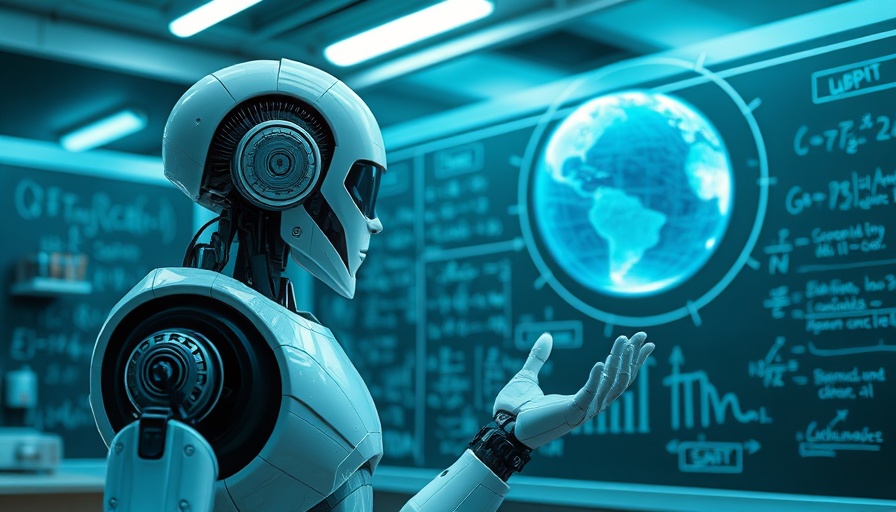
Understanding World Models in AGI Development
As the quest for Artificial General Intelligence (AGI) intensifies, a critical area of focus is the concept of world models. World models serve as internal representations that allow AI systems, particularly large language models (LLMs), to simulate and predict future states based on their observations and actions. The exploration of whether LLMs can develop these models from training data is essential for understanding the advancements toward AGI. Recent discussions surrounding a research paper from Harvard highlight the implications of this capability and what it could mean for the future of AI.
In Are World Models the Key to AGI?, the discussion dives into the role of world models in the development of AGI, exploring key insights that sparked deeper analysis on our end.
What Are World Models and Why Are They Important?
World models in AI refer to constructs that help machines build an understanding of their environment, akin to how humans subconsciously create mental models. These models allow AI to handle uncertainty, make predictions, and plan actions efficiently. For instance, a baseball player intuitively predicts the trajectory of a pitch without consciously simulating every possibility.
The foundational work on world models, introduced by David Ha and Jurgen Schmidt-Hoover in 2018, consists of three critical components: vision models that compress sensory input, memory models that predict future states, and controller models that decide actions based on this data. This architecture has been successfully implemented in simulations, showcasing how world models can enhance performance by enabling AI systems to 'dream' about potential actions in a simulated environment.
Key Insights from the Harvard Research Paper
The recent paper from Harvard examines whether foundation models can truly develop effective world models. The researchers utilized an inductive bias probe to assess how well these models adapt to new tasks based on the underlying world model they are ideally expected to understand. Their findings indicate that while LLMs can perform well on specific tasks, they often struggle to generalize their knowledge to unexplored domains, lacking transference of skills across different applications.
For example, an LLM trained on planetary orbits was successful in making precise predictions within that domain but failed to extrapolate those findings to broader principles of gravity. This limitation suggests that LLMs might be skilled at task-specific predictions yet fall short in developing a comprehensive understanding of the world.
The Shift from Pre-training to World Models
A significant factor in the current discussion is the prevailing shift in AI development paradigms. Typically, advances in LLMs have relied on pre-training methods, which have shown diminishing returns in recent times. Critics argue that merely scaling models and datasets may not be enough to achieve human-like intelligence.
World models represent a paradigm shift, focusing on enabling deeper understanding rather than merely increasing model size or data volume. This architectural transformation aims to foster reasoning, planning, and adaptability within AI—traits essential for mimicking human intellect. By building intricate internal models that simulate real-world dynamics, AI systems could achieve greater versatility across various tasks.
Challenges and Future Potential of World Models
Despite their potential, world models face distinct challenges. High computational demands, risks of generating hallucinations during simulations, and difficulties in refining models to function effectively in real-world scenarios pose obstacles that researchers are diligently working to overcome. Additionally, many world model techniques remain less mature compared to conventional LLM scaling.
Nevertheless, exciting developments are emerging in this field. Projects like Fei Lee's World Labs demonstrate the capability of AI systems to generate 3D worlds from single images, promising a leap forward in how AI interacts with data and environments.
Actionable Insights for Business Owners
As a business owner, understanding these developments in AI, particularly the importance of world models, can influence strategic decisions on technology adoption and resource allocation. The transition towards models that can conceptualize and apply knowledge across various tasks signifies that the next wave of AI applications will hinge on robust world models.
Real-world implications of this technology are vast, from enhancing AI-assisted creative processes to providing more consistent outputs in media generation. By investing in AI technologies that center around world models, businesses can stay ahead of the rapidly evolving innovation landscape.
In conclusion, the exploration of world models is pivotal for the future of AGI and has substantial implications for a variety of industries. As we navigate this transformation, embracing AI technologies can lead to significant competitive advantages. Start using AI now to leverage these advancements and prepare for the future of business.
 Add Row
Add Row  Add
Add 




Write A Comment